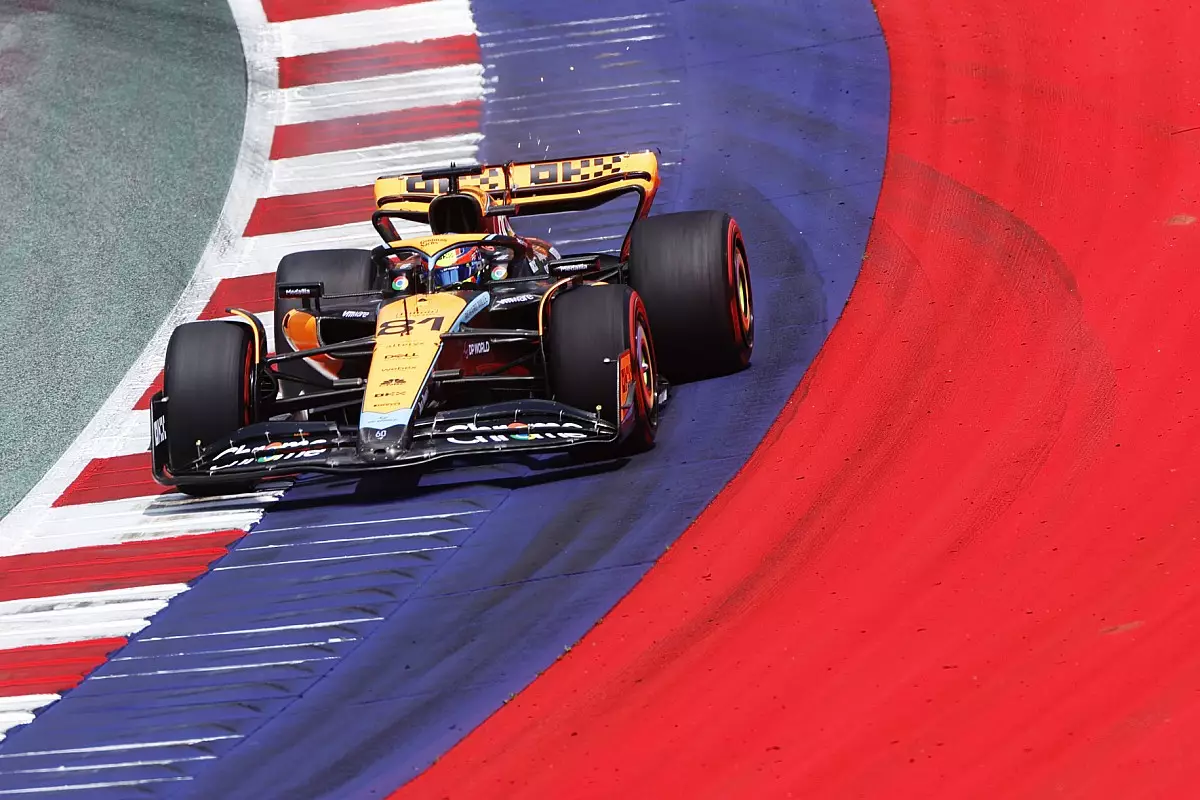After a controversial weekend at the Qatar Grand Prix, where track limits chaos led to penalties and grid position changes, it has become clear that the current approach to managing track limits in Formula 1 is inadequate. Instead of solely relying on the FIA to enforce regulations, former FIA Vice President and rally driver Ben Sulayem believes that the responsibility should lie with the circuits themselves. Sulayem argues that circuits like Qatar and Austria need to make modifications to discourage drivers from exceeding track limits.
The Problem with Track Limits
The issue of track limits has been a recurring problem in Formula 1, affecting both the fairness and safety of the sport. During the race in Qatar, drivers regularly abused the kerbs, leading to sidewall separation on Pirelli rubber and the implementation of an 18-lap limit on tire life. It is evident that circuit modifications are necessary to prevent such incidents from occurring and to protect the integrity of the competition.
One potential solution to address track limits is to focus on improving kerb designs. Ben Sulayem suggests that circuits should make the areas beyond the track surface slippery when drivers venture off track. By doing so, drivers will face more significant challenges and disincentives to exceeding the limits. Another consideration is adjusting the height of the kerbs without compromising driver safety. Additionally, the possibility of using gravel to deter drivers from running wide should be explored, but caution must be exercised to prevent cars from getting stuck or sustaining damage.
To develop effective circuit modifications, it is crucial to prioritize the feedback from Formula 1 drivers. They possess firsthand knowledge and experience regarding the challenges of adhering to track limits. By actively involving drivers in the decision-making process, circuit administrators can gain insight into the practicality and effectiveness of proposed changes. Their input will be invaluable in striking the right balance between competitiveness and safety.
Urgency for Implementation
Ben Sulayem emphasizes the urgency of addressing track limits by calling for immediate action to implement circuit modifications. Waiting any longer would only perpetuate the existing problems, threatening the credibility of Formula 1. These changes must be implemented before the start of the next season to ensure a fair and competitive racing environment. It is evident that the current situation is untenable, and a proactive approach is necessary to uphold the integrity of the sport.
Enhancing Technology and Resources
While circuit modifications are vital, Ben Sulayem believes that the FIA must invest in technological advancements and additional resources to better control track limit breaches. Implementing advanced technologies can provide more accurate monitoring and enforcement capabilities. However, to deploy these solutions effectively, the FIA requires greater financial resources. As a multi-billion-dollar operation, Formula 1 should prioritize the allocation of sufficient funds to enable the FIA to fulfill its responsibilities adequately.
The current agreement between circuit owners and Formula 1 must be reevaluated to ensure that the FIA receives the necessary funding to carry out its duties effectively. As the representative of circuit owners, Ben Sulayem highlights the need for a better arrangement that supports the FIA in its endeavors. A more equitable financial arrangement would enable the FIA to invest in essential resources and technology, ensuring the optimal management of track limits.
A Transparent Approach
Ben Sulayem underscores the need for transparency when it comes to financial matters in Formula 1. While the value of individual teams is extensively discussed, the FIA’s role and financial requirements are often overlooked. The organization should be free to manage the sport effectively, and this can only be achieved through adequate resources. A transparent approach to finances will facilitate discussions and negotiations, ensuring that Formula 1 operates in the best possible manner.
It is imperative for Formula 1 circuits, such as Qatar and Austria, to take proactive measures to address the track limits chaos that has plagued the sport. Circuit modifications that discourage drivers from exceeding track limits, such as improved kerb designs, are necessary to ensure fairness and safety. Additionally, incorporating driver feedback, enhancing technology, and securing adequate resources will contribute to more effective regulation of track limits. By prioritizing these changes, Formula 1 can maintain its integrity and provide an optimal racing environment for drivers and fans alike.


Leave a Reply